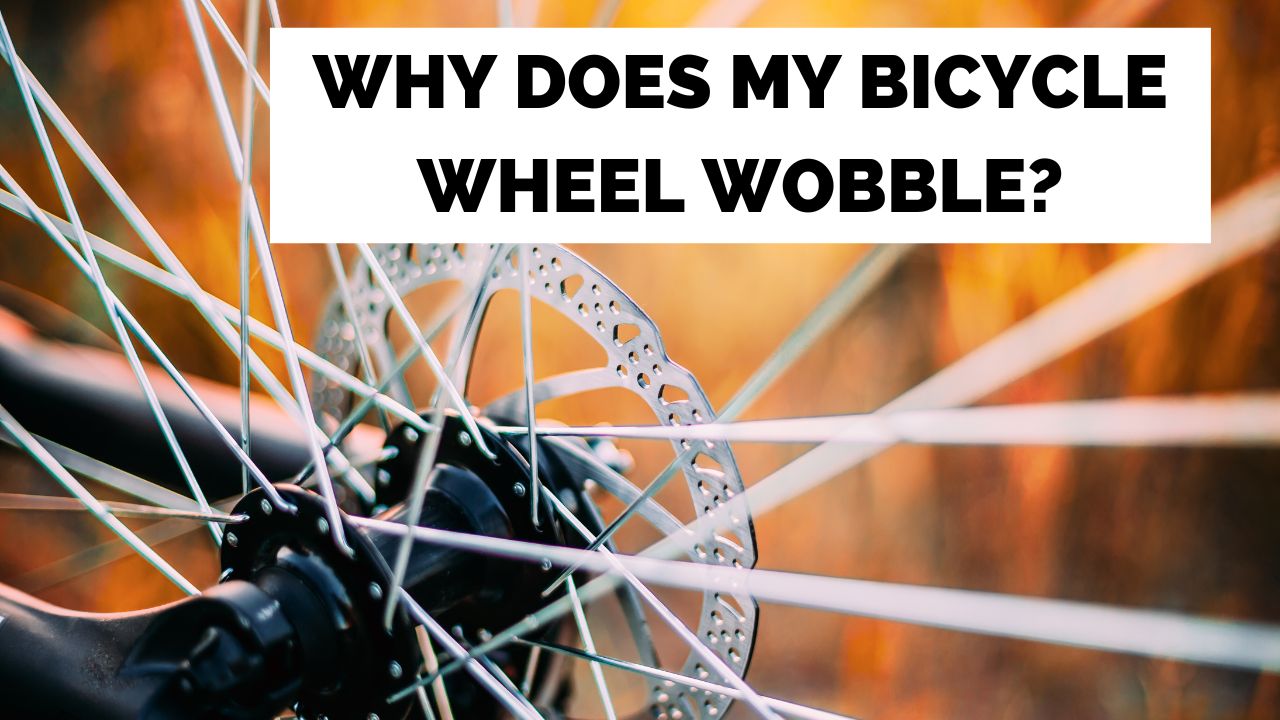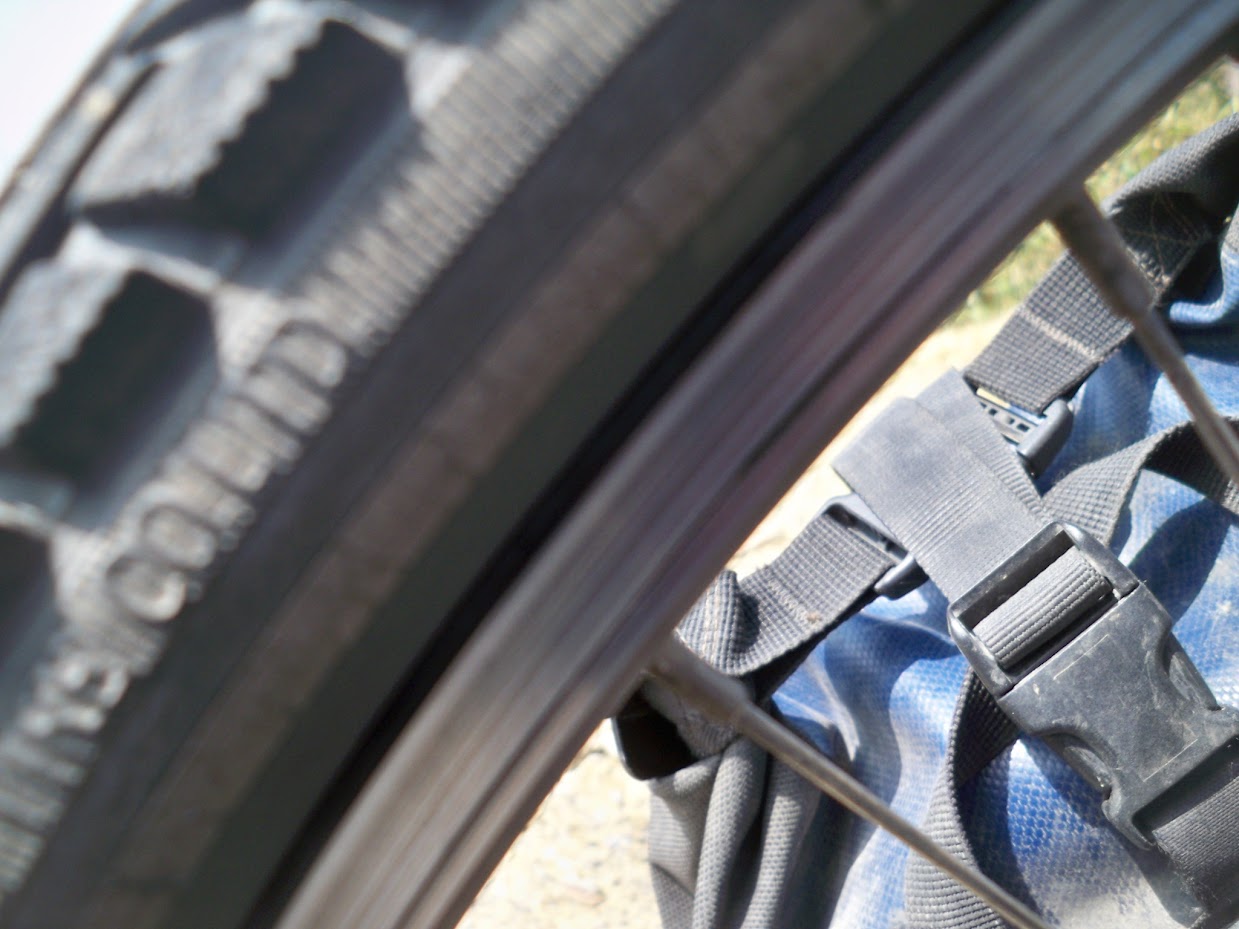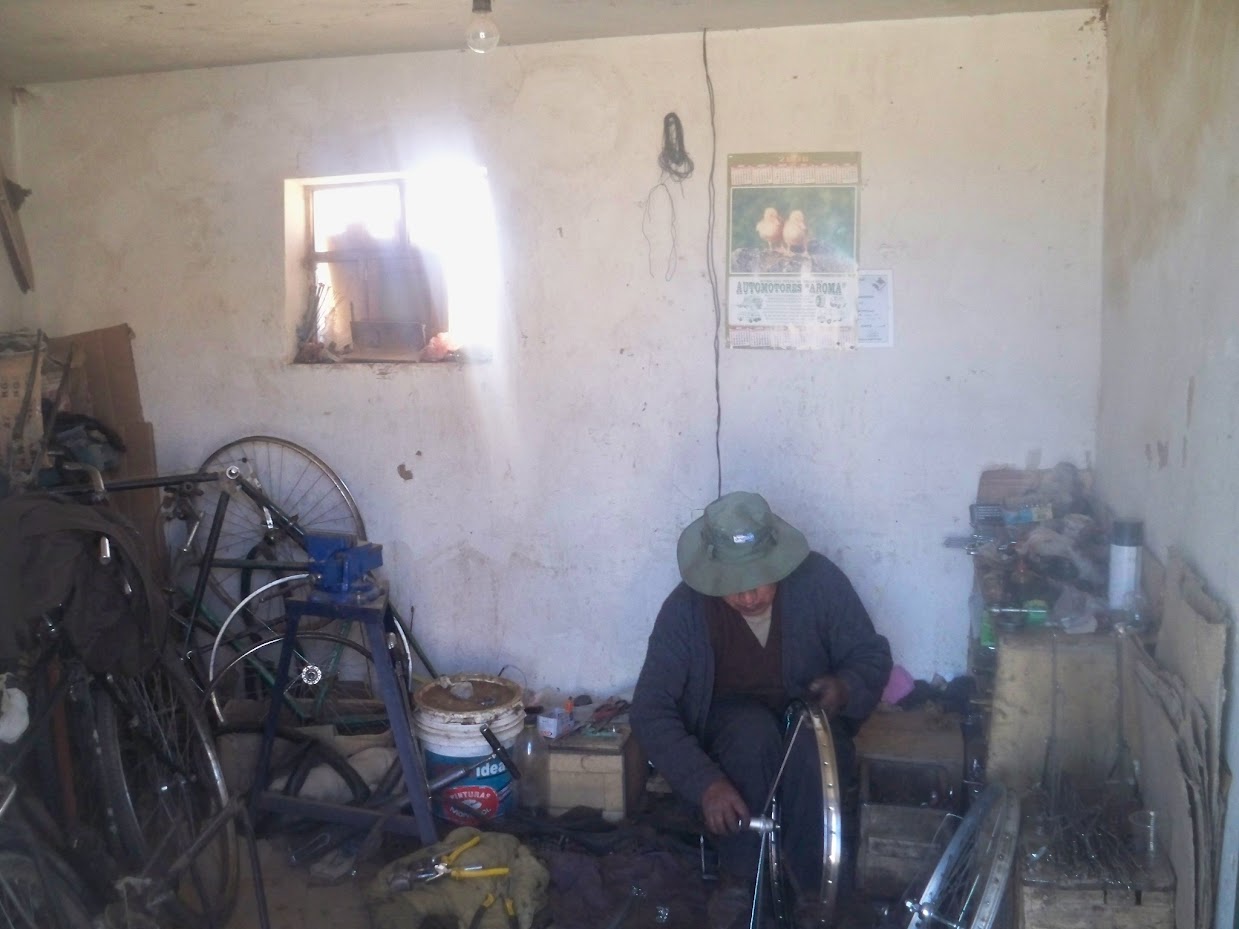The most common reasons for a bicycle wheel to wobble, are loose or broken spokes, a badly fitted tyre, or damaged hub.

Diagnosing a wobbling bicycle wheel
Have you just noticed that one of the wheels on your bike is wobbling? There can be several reasons for this, and it's important from a safety perspective to identify and fix the cause of the bicycle wheel wobble as soon as possible.
During my various bike tours around the world, I've experienced wobbling wheels from time to time. Mainly, these were rear wheel wobbles, but from time to time it's also been the front wheel. Not only do they make the bike hard to pedal, they can also be dangerous.
On most occasions I've been able to fix the wobbling wheel with the multi-tools, spoke key and spare spokes I've had to hand. Other times, I've had to make my way to a bicycle mechanic or get a completely new wheel.
Here's a step by step guide to what to look for if your bike wheel wobbles, and how you can go about solving the problem.

Check the Quick Release Leaver Or Axle Nuts
First, let's start with the obvious, and check that the bike wheels are firmly fixed in place. Make sure that the quick release lever or axle nuts are tightened properly.
Turn the bike upside down and spin the problem wheel. Experiment with tightening the QR lever or nut to different to degrees to see if the wheel loses its wobble when you spin it,.
A loose QR lever or axle nut can cause the wheel to move while riding, causing a wobble. If either of these is loose, tighten them firmly and check again for any wobbling.
In very rare cases, you may find that the wheel skewer itself is damaged or bent. This is easily replaced if you have a spare.
Related: Common Bicycle Problems
Check The Spokes
The next step is to inspect the spokes of the wheel. Take a look at each spoke individually to see if any are broken, checking for damage or signs of wear.
Use your fingers to gently push and pull each spoke, feeling for any movement. Loose spokes lead to an unbalanced wheel which could be the cause of the wobble.
If you find a loose spoke, tighten the spoke tension with a spoke wrench. A spoke wrench is a tool specifically designed to adjust the tension of the spokes. Out on the road, you can probably get the wheel good enough to ride, although it might need more precise truing on a stand later on.
If you find a broken spoke, you'll have to replace it. Front wheel spokes are relatively easy to replace. Spokes on the rear bike wheel may require a bicycle cassette lockring removal and chain whip, although there are temporary ways around this.
If you manage to replace your spoke on the road, it is still a good idea to get your wheel on a truing stand to perfect the job.
This is a task that may require some experience, so you may want to consider taking your bike to a professional mechanic at your local bike shop.
Related: Importance of a shakedown ride
Check the wheel bearings
If the spokes on your bicycle wheels all seem to be in good shape, the next step is to check the wheel bearings to see if they are the cause of the wobbly wheels.
The wheel bearings are what allow the wheel to rotate smoothly. If they are damaged or worn, they can cause the wheel to wobble.
To check the wheel bearings, hold the wobbly wheel by the axle and try to move it side to side. If there is any play in the wheel, the bearings need to be replaced or you may need a new wheel hub.
Check the rim for damage
If the spokes and bearings are in good shape, the next thing to check is the wheel rim itself in case it is slightly buckled.
Look at the bicycle rim carefully to see if there are any dents, cracks, or other signs of damage. If you find any damage, the rim may need to be replaced. By holding it in front of you, and spinning the wheel slowly, you may even see that you have a bent rim.

I've experienced cracked rims a couple of time when bike touring, particularly when cycling through South America. There was a lot of stress being put on them from constant braking with heavy loads going downhill.
A damaged wheel which results from a bent rim can't really be repaired. You'll eventually need a new rim and a wheel rebuild. Don't throw the old bent wheel out though, as the hub and perhaps even the spokes might be able to be reused when building the new wheel back up.
Related: Disc brakes vs rim brakes
Check the bike tires
Finally, check the tire itself, as not all wobbly wheels are due to spokes and hubs. Look for any bulges, cuts, or other signs of damage. If you find any damage, the tire needs to be replaced.
Sometimes, a tire may not have been positioned on the rim correctly, or may be inflated oddly. If the tire looks misaligned, try adjusting it and checking again for any wobbling.
It also may be a case of tire pressure not being adequate, so pump it up to the right pressure and check again.
Related Posts:
Still can't find the cause?
There could be a few other reasons why your bike wheel is wobbling when you ride.
When bike touring, it is quite common to have the rear of the bike loaded quite heavily, and this can make the front wheel appear to have a wobble. A little weight redistribution should resolve this.
Another example, is if you find that your front wheel appears to have a wobble, lift it up and spin the wheel. If you can't see anything, there is a chance that your bicycle frame could be slightly bent, causing the wheel to wobble.
Final Thoughts
In conclusion, a wobbling bicycle wheel can be caused by a variety of factors, including loose or damaged spokes, worn bearings, a damaged rim, or a damaged tire. By following these steps, you should be able to diagnose the cause of the wobble and take the necessary steps to fix the problem. If you're unsure about how to do any of these steps or don't have the necessary tools, it's always a good idea to take your bike to a professional mechanic.

FAQ About Wobbly Bicycle Wheels
Some of the most frequently asked questions about shaking or wobbly bicycle wheels are answered below.
How can I tell if my bike wheel is bent?
The easiest way to tell if your wheel is bent is by inspecting it visually, spinning the wheel and looking for any deformities or warping. If you don't notice anything, try holding the wheel by the axle and moving it side to side. If there is any play, the wheel is likely bent.
What causes wheel wobble on a bike?
The most common cause of a wobbly bicycle wheel is an imbalance between the spokes on either side of the wheel, which can be caused by loose or damaged spokes, worn bearings, a bent rim, or a damaged tire.
Is it safe to ride a bike with a wobbly wheel?
While it is ok to continue riding a bicycle with a wobbling wheel until you get to a bike shop or can repair it yourself, you should avoid high speeds and steep downhill sections. Also note that riding a bicycle with a wheel wobble may lead to further bicycle damage.
What tools do I need to change the spokes on a rear bike wheel?
You'll need the correct length spare spokes, perhaps some spoke nipples, a way to remove the rear gear cassette, and a spoke key. If you are doing the spoke replacement on a back wheel at home, a truing stand would also be useful, although there are improvisations you can make in lieu of one.
Sometimes, a wobbling wheel can be caused by a misaligned frame or fork. This is less common but should be considered if other causes are ruled out.